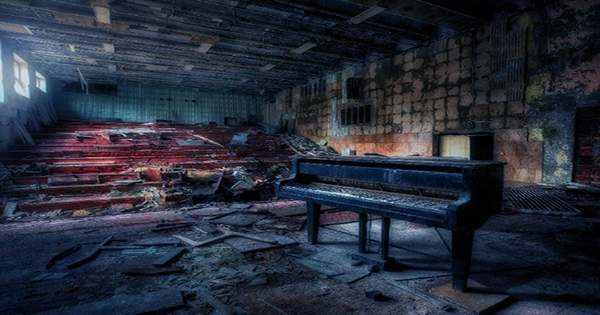This image may be one of the most impressive/stupid photographs of all time. It can only be seen as the Polaroid of some industrial salads in a rundown warehouse; you look at the epicenter of the Chernobyl nuclear disaster, carrying more than 10 billion bananas of radiation.
Known as the “Elephant’s Foot”, this cool molten throat of radioactive material was once powerful enough to kill anyone standing in its presence. Although its power has been declining for decades, it still emits heat and haunts power plant debris with dangerous levels of radiation.
The elephant’s foot is a mass of corium – a once molten mixture of uranium, graphite, concrete, and sand – formed during the Chernobyl nuclear disaster. In the short hours of April 2, 1986, the furnace of the 6th Lenin Atomic Power Plant near the Ukrainian city of Pripyat was struck by freak energy during a routine system safety test. This caused the uranium fuel rods to overheat in their cold water, creating a lot of steam and pressure. A huge explosion followed, followed by a second explosion, which released radioactive material into the atmosphere and stopped the cooling flow in the reactor.
This hell created a molten material that flows and flows like lava when it emits deadly levels of ionizing radiation. As the catastrophe continues to go from bad to worse, the bottom of this deadly lava furnace melts a hole through steel beams and concrete and falls into the basement, where it eventually cools and hardens. As the term “meltdown” implies, this mess has created enough thermal energy to literally melt the reactor core and its nuclear fuel rods. Shortly after the disaster, a pile of cooling curry was emitting about 10,000 roentgens of ionizing radiation per hour. According to Nautilus Magazine, this is the equivalent of a fatal dose in a matter of minutes or a blast with millions of chest X-rays. So, you may ask, why or how is a man standing right next to the elephant’s foot?
The man photographed in the radioactive opal was Arthur Korneyev (sometimes translated as Korneev), a Kazakh nuclear inspector who arrived in Chernobyl shortly after an accident. Among others, he was given the daunting task of finding the culprit fuel and measuring the level of radiation in Chernobyl’s intestines.
Korneyev, 65-year-old, said in a rare 2014 interview with the New York Times, “We were trailblazers. We’ve always been on the front lines.”
These levels can still land a person with severe radiation sickness if they have close-up exposure for 5 or so minutes, but it seems that fast meter readings and a snap of the camera are not long enough to have any dramatic acute health effects. The most famous image of him and Elephant’s foot (above) was taken in 1996, ten years after the initial disaster. During this time, the elephant’s foot was emitting about 10 percent of the radiation it created at once.
The image of the elephant’s foot is grainy, distorted, and dotted with strange signs of excessive exposure. It’s not the result of the camera’s poor quality or any Instagram filters, it’s how the film evolved from messing with radiation, as you can see.
Notably, Korneyev is still believed to be alive. Although, perhaps surprisingly, Chernobyl suffers from cataracts and other health problems due to frequent running with heavy radiation. Korneyev joked, “Soviet radiation is the best radiation in the world.”














